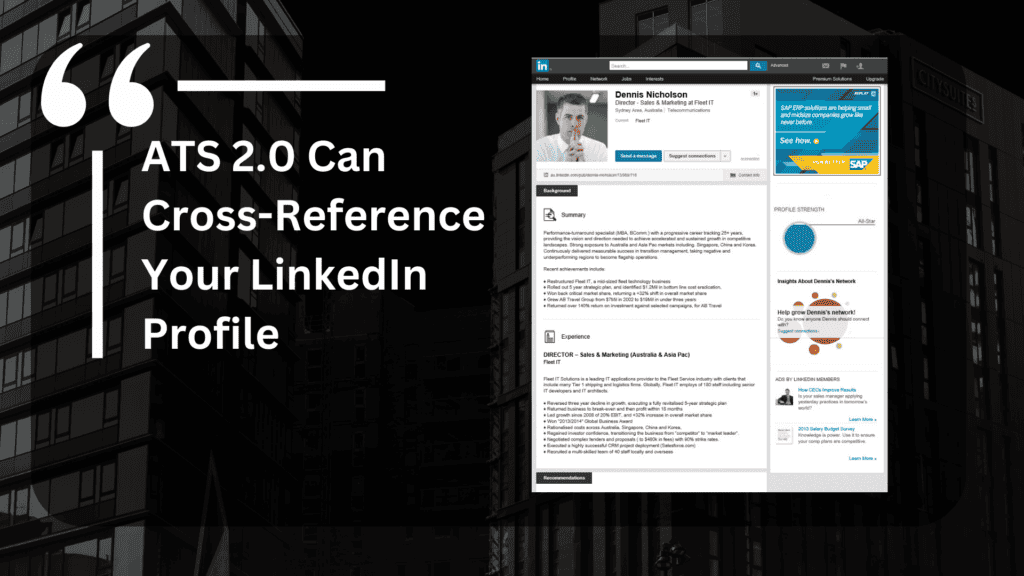Applicant Tracking Systems 2.0 (a new era)
Applicant Tracking Systems - The Next Generation
Applicant Tracking Software (ATS) is software used by recruiters and emloyers to automate the process of managing and searching candidate databases. It is predominantly a track and trace database. Recruiters can also use the software to quickly manipulate candidate applicant searches based on key criteria such as technical keywords that may appear in the resume.
ATS is not new, and has been around for more than two decades. During this time, jobseekers and specialists in resume writing services quickly learned how to manipulate content and key wording to help improve their rankings in the software. However, it wasn’t long before everyone was doing the same thing and the playing field would soon level.
- ATS 2.0 is all about NLP (natural language processing)
- Next gen AI can decipher achievement-focused resume content
- ATS systems cross-reference with LinkedIn
- Recruiters can quickly find resumes by industry
- Keyword stuffing will no longer work
- BOTS will likely penalise ChatGPT or AI-generated resumes
ATS 2.0 is all about NLP (natural language processing)
Applicant Tracking Systems (ATS) 2.0 have come a long way from the basic keyword-matching of their ancestors. The new generation of ATS features Natural Language Processing (NLP), which allows these systems to understand and interpret human language more contextually and meaningfully. Unlike the older models that rigidly scanned for exact keyword matches, ATS 2.0 uses NLP to evaluate a resume’s content with a deeper understanding of language structure, context, and relevance.
This means resumes are now evaluated not just on whether they contain specific words, but on how well those words fit within the bigger picture of sentences and job descriptions. NLP algorithms can identify synonyms, infer meaning from job-related phrases, and even assess the strength of action verbs. This gives recruiters the option to use AI-driven tools to match candidates with roles more accurately based on their actual job experience and achievements, rather than just basic keyword density.
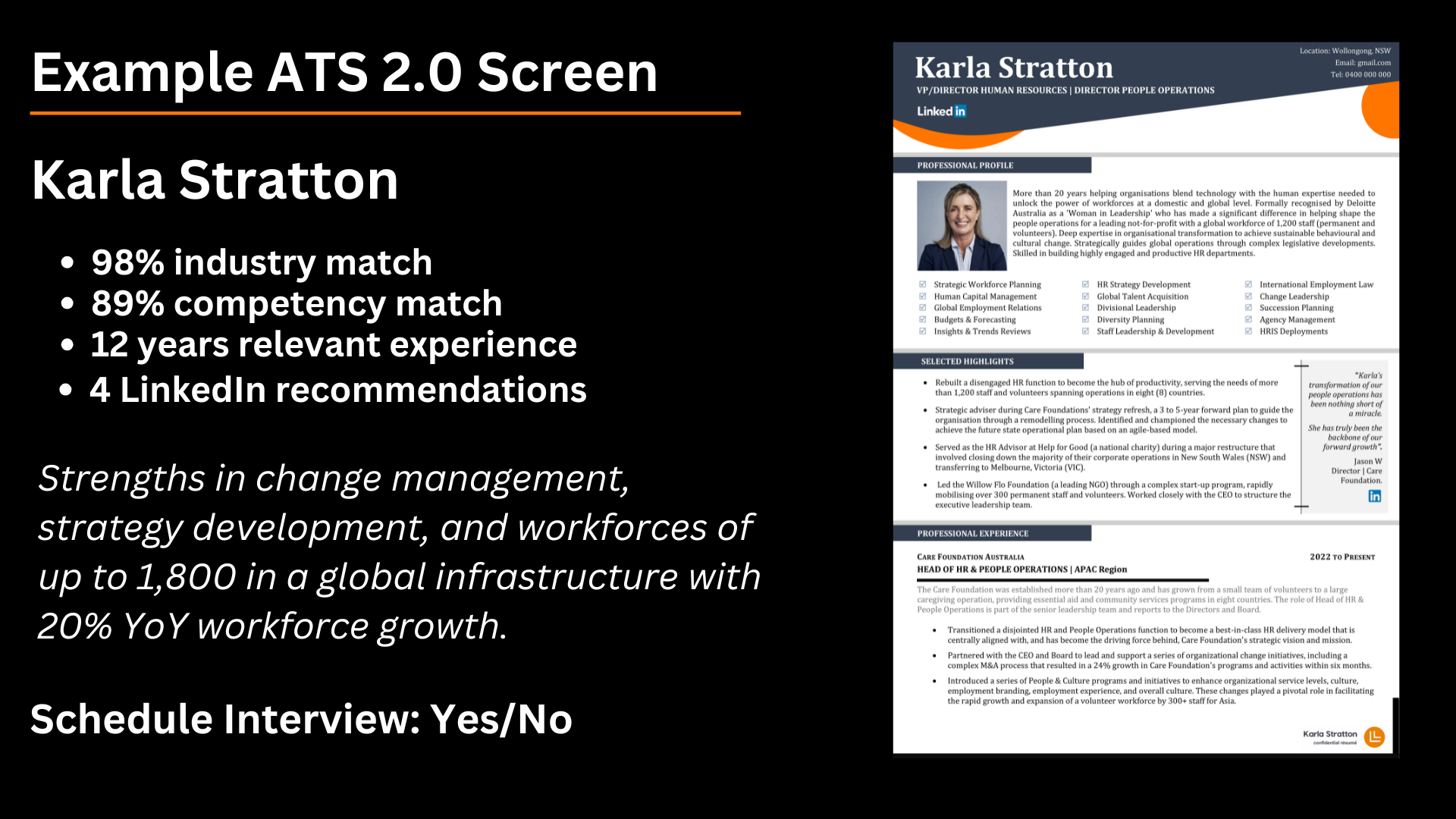
Game Changer - ATS 2.0 deciphers achievement focused content
Interpreting complex resume language with a focus on accomplishments and outcomes is where these new platforms shine. The ability to recognise context and intent is an incredible transformation from the ATS of the past.
For example, while old systems could detect the term “project management,” next-gen AI can understand whether the applicant effectively led projects, achieved milestones, or improved processes, such as “Delivered $12M in new cloud solutions architecture, achieving a 10% cost improvement versus the initial budget and delivering 2 weeks ahead of schedule.”
And this is where it gets exciting.
Recruiters will be shown “snippets” in which AI will provide a summary of the candidate’s skills, expertise, and achievements.
Therefore, bland and shopping-list-styled resumes that previously passed the old legacy ATS filters will likely find themselves being pushed further and further to the back of the queue. It will become increasingly important for resumes to prioritise showcasing key contributions and quantifiable results.
ATS systems cross-reference with LinkedIn
Integration with LinkedIn is adding a new dimension. By being able to quickly cross-reference applicant profiles on LinkedIn, these systems are now creating a much more comprehensive picture of a candidate’s qualifications. By doing so, employers can validate the information on a resume, gain additional context from LinkedIn profiles, and see endorsements, recommendations, and other professional interactions. This research and findings will then be summarised and included in the ATS “Candidate Summary”.
Recruiters can quickly find resumes by industry
Until now, ATS has been largely offline. Yes, current ATS systems are integrated into the online recruitment process, but when parsing resumes, the process has largely been offline. What is changing is how ATS 2.0 (AI) can quickly identify the industry background of candidates by researching and searching for which companies and sectors they have been working for. Giving employers the ability to quickly identify similarly matching candidates (by industry) is something that had previously required manual/human interaction and can be a game changer when employers are trying to sift through 500+ CVs/resumes and find candidates coming from competitors or who understand the industry.
Keyword stuffing will no longer work
Keyword stuffing in resumes no longer works with modern ATS 2.0. Given that advanced ATS systems use AI and machine learning to look at context and relevance of keywords not just a list of terms. They can detect overuse of keywords which can hurt your ranking. ATS 2.0 evaluates resumes on quality, relevance and clarity and prioritises those that naturally have the skills and experiences.
To win you need to have well structured resumes with keywords used organically and showcase your qualifications without manipulation. Quality content is key!
BOTS will likely penalise ChatGPT or AI-generated resumes
More and more recruiters are telling us, “We can spot a ChatGPT resume a mile off.”
What we have seen is that AI-generated content lacks the ability to convey your distinct personality, passion, and professional story effectively. Moreover, the content often appears generic and cookie-cutter, instantly turning recruiters against it. Furthermore, ATS software is now being redesigned to scan and analyse resumes, becoming highly adept at identifying generic, templated, or machine-generated content.
So watch out. If detected, AI generated resumes can be penalised or discarded by both the recruiter and ATS, significantly reducing your chances of securing an interview..
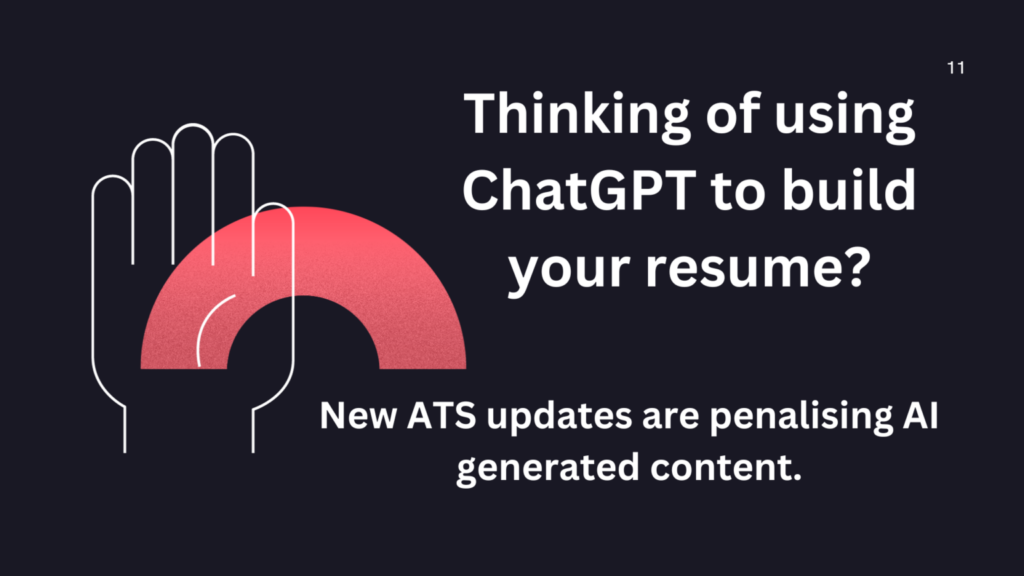
Getting your Resume to the Top 5%
To maximise your chances of success, invest the time and effort in creating content that showcases your unique qualities and achievements. If using a resume writer, they will need to take you through a thorough interview process to really analyse your skills, capabilities, and requirements and build authentic content.
We are advising all jobseekers and clients to rethink and reposition their online content, especially their LinkedIn profiles. As mentioned earlier, new ATS systems will be scouring both the CV and your online profile and using this to create summaries for the recruiter. Concentrate on both your online content as seeking recommendations from managers, colleagues and peers.
These are exciting changes in the industry, and we relish the opportunity to help clients continue to stand out from the crowd.
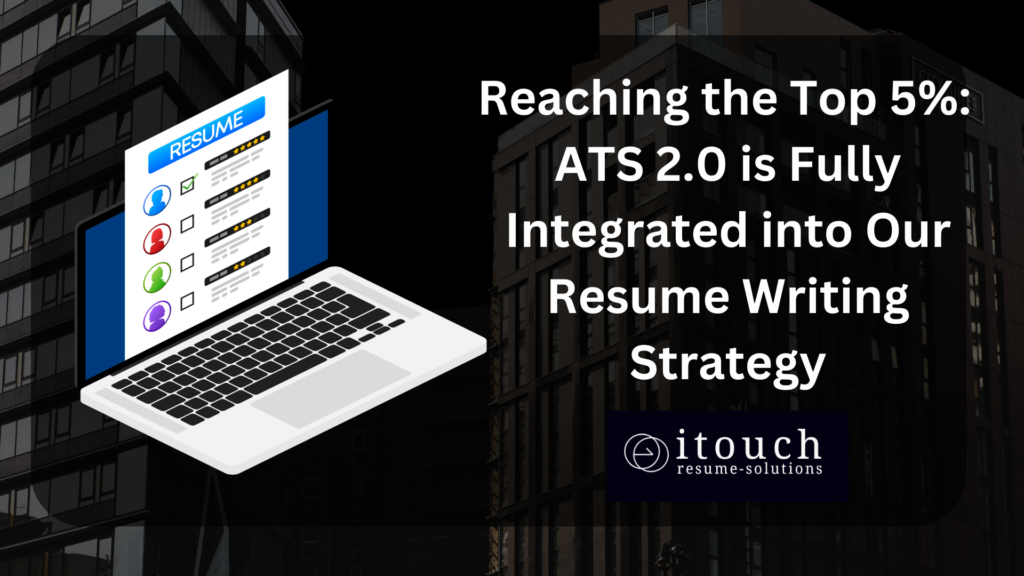
Celebrating 20 years beating Australian ATS systems.

